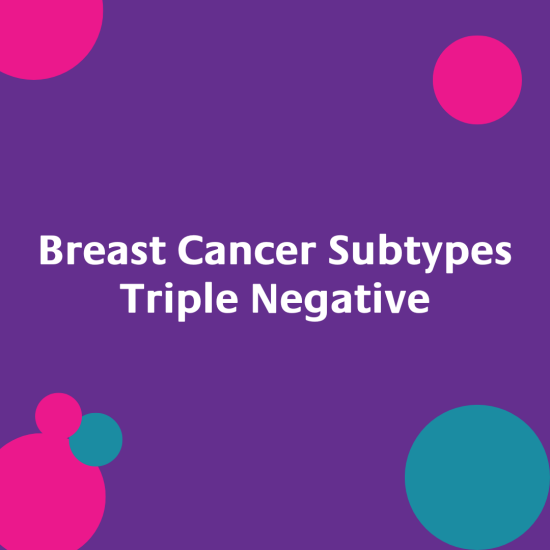17th February 2023 by Alexander Kolliari-Turner Education

When diagnosed with secondary breast cancer, all of the medical terminologies can be very overwhelming. This three part series of posts will tell you a little bit more about the main classifications of secondary breast cancer that are used to direct medical treatments. This final post focuses on Triple Negative Breast Cancer.
Breast cancer tumour samples are analysed for three main receptors which get activated when specific substances bind to them and subsequently signal cancer growth. These are: the oestrogen receptor (ER), the progesterone receptor (PR) and the human epidermal growth factor 2 receptor (HER2). An absence of all three of these receptors results in the classification of Triple Negative Breast Cancer, which is commonly abbreviated to TNBC. Around 15% of newly diagnosed breast cancers will be triple negative. The absence of these three main receptors means that the breast cancer growth is not attributable to these receptors and so drugs that target these receptors to slow down cancer growth will not work. An example would be hormone therapy which targets the ER or trastuzumab (also known as herceptin) which targets HER2.
Although the extent at which the breast cancer has spread and previous treatment history will determine treatment options, chemotherapy is commonly used if secondary TNBC is diagnosed. Other targets can also be investigated to help guide treatment options, these include anti-programmed cell death-ligand 1 (PD-L1). Metastatic TNBC patients who are PD-L1 positive can be prescribed Tecentriq® (also known as atezolizumab, a targeted immunotherapy against PD-L1, which helps the immune system kill the cancer cells) and chemotherapy (nab-paclitaxel, also known as Abraxane®).
Sacituzumab govitecan-hziy, also known as Trodelvy®, is another targeted therapy used for secondary TNBC patients. This is prescribed to patients who have already had two or more chemotherapy treatments for secondary TNBC and works by targeting the Tumor-associated calcium signal transducer 2 (TROP2) protein that is overexpressed in many TNBC tumours.
There are a number of clinical trials being conducted that are investigating new targeted treatments for secondary TNBC patients. An example of one of these is the Phase III TROPION-Breast02 study. This is investigating if datopotamab deruxtecan (a drug that binds to TROP2 and delivers chemotherapy to cancer cells in a targeted manner) performs better than standard chemotherapy treatment in patients who are not candidates for PD-1/PD-L1 inhibitor therapy and are yet to have any chemotherapy for their secondary TNBC.
Remember when it comes to your diagnosis - knowledge is power!
#signsandsymptoms #subtypes #advancedcancer #incurable #livingwithcancer #clinicaltrialls #livingwithmbc #livingwithsbc #cancerconversations #sbcconversations